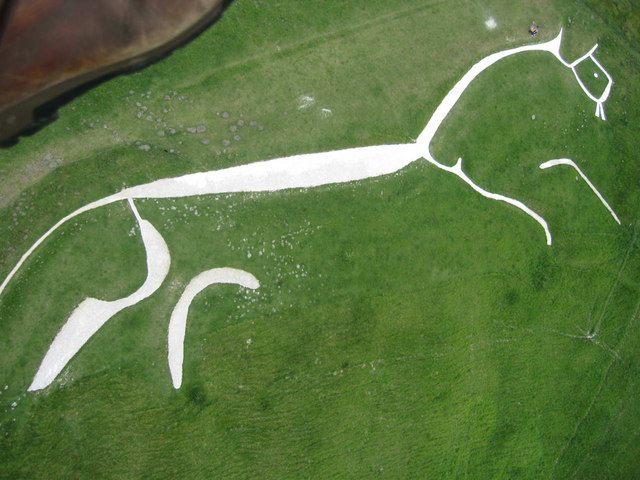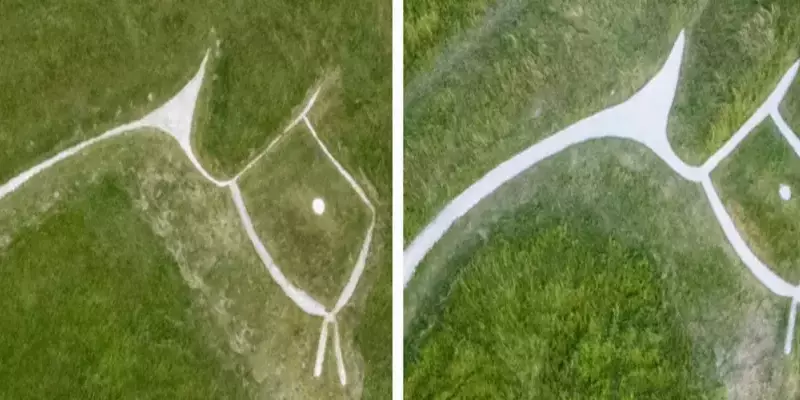Oldest chalk figure in Britain underwent restoration

The White Horse of Uffington has been restored by the archaeologists of the National Trust. The figure on the ground was made by prehistoric inhabitants of the British Isles sometime in the Bronze Age or early Iron Age (between the 12th and 4th century BC), making it 3000 - 1500 years old. It is considered to be the oldest figure of such kind in Britain. The Horse was carved into the ground and filled with chalk, producing a minimalistic pictograph of the animal. It dominates the local landscape and can be seen from 20 miles away. Today it is taken care of by National Trust.
National Trust Archaeologist Adrian Cox explained: “We don’t know for certain its original purpose”, but “through the efforts of generations of local people, the horse has been cared for, allowing it to survive for thousands of years to become an iconic feature of this landscape.” It has been theorised that the horse is related to Celtic goddesses Ripona or Rhiannon, but it is hard to know.
The figure is not only an example of early art but also a testament to the power of community and the manifestation of a bond connecting generations - it is preserved so well to this day because for millennia local peoples would hold a Chalking Day. Chalking Day is a cleaning ritual held regularly to reapply the chalk paste on the figure and prevent it from being overgrown, followed by a fair and celebrations. Francis Wise wrote about it in 1736: “The ceremony of scouring the Horse, from time immemorial, has been solemnized by a numerous concourse of people from all the villages roundabout." And it is still happening to this day.
The restoration conducted by the archaeologists of National Trust carefully cut back the lines in the turf, to the estimated original edge, and also rechalked the white surfaces. Particularly, the head and neck areas of the pictograms were estimated to shrink twice from their original science, based on modern research. The restoration project brought them back to their original width. Soil samples from the earliest levels were also taken on this occasion for further study - it will allow for the most accurate age estimate using the most up-to-date techniques.
National Trust senior properties curator Win Scutt commented: “We’re delighted that work is being done to better understand this iconic place while it’s returned to its former shape and size.”
We at Icon are always thrilled to see important pieces of cultural heritage conserved and restored.

Learn more about National Trust's work at the White Horse Hill here.
